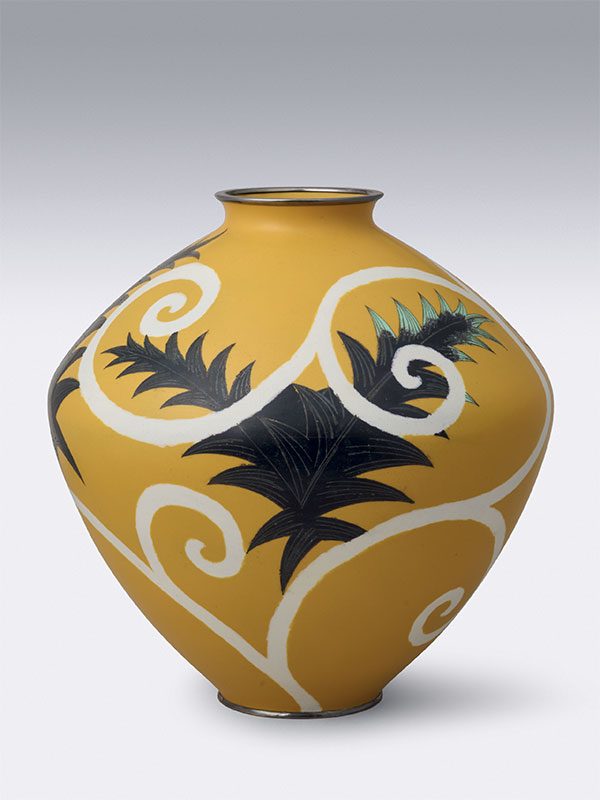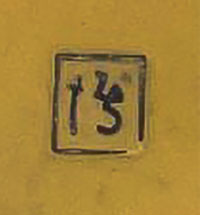Cloisonné enamel vase by Ota Hiroaki
Japan, Showa period, 1926 – 1989
A cloisonné enamel vase of globular shape, supported on a narrow footrim and with equally narrow mouth. Both mouth and foot are covered in silver rims. The sides are decorated with pattern of feathered ferns in black with green ends, interconnected by white swirls, all on a bright yellow ground. The slightly recessed base is enamelled with the two-character signature of Ota Hiroaki. The vase is contained within the original wood tomobako, the top of which is inscribed Shida mon, shippo kabin (cloisonné vase with a fern design). The back is inscribed Hiroaki saku, (made by Hiroaki) and has the seal Hiroaki.
The artist Ota Hiroaki (1913 – 1991) was born in Nagoya City, Aichi prefecture; he is considered one of the leading cloisonné artists of the Showa Period. Ota Hiroaki set up the family business, the Daichiki studio, which is now run by his son, also called Ota Hiroaki, the fourth generation. The first Ota Hiroaki participated frequently in the Nitten exhibitions. His works were introduced in a book entitled Showa no kyosho sakuhinshu (the works of cloisonné art by the masters of the Showa Period), published by the Japan Cloisonné Artists Association (Nihon Shippo sakka kyokai) in 2000. Ota Hiroaki was the third generation of an enamelling family. His father, Ota Yoshisaburo, worked during the Meiji period, was also based in Nagoya and won an award for his work at the 1889 Paris Exposition.
昭和时代/太田博明作珐琅花瓶
此瓶丰肩、收足,圈足与瓶口等宽,呈二盌相扣状。其通体以黄色为地,周身装饰白色简笔卷草纹及数组黑绿色叶纹,叶纹刻画细致,可见叶脉,与简易的卷草纹对比明显。口沿及圈足为银色,圈足内落作者签名款。太田博明(1913-1991),名古屋生人,是日本战后珐琅艺术的领军人物。其创立了大好(Daichiki)珐琅工坊,正式将太田家族的珐琅工艺品牌化。此工坊由其子经营至今。其作品被收录于2000年由日本珐琅艺人协会出版的《昭和时代的珐琅大师》一书中。


